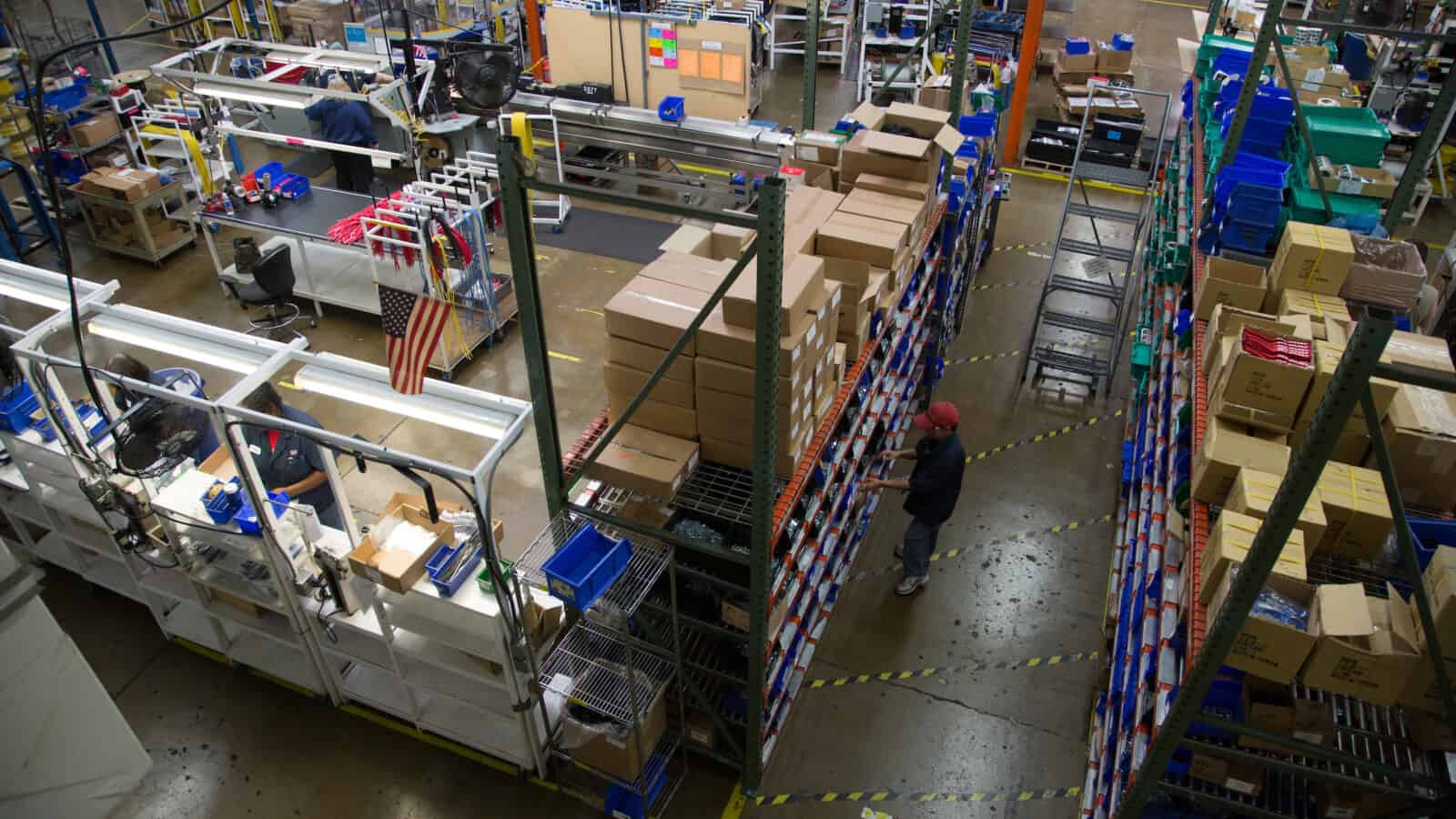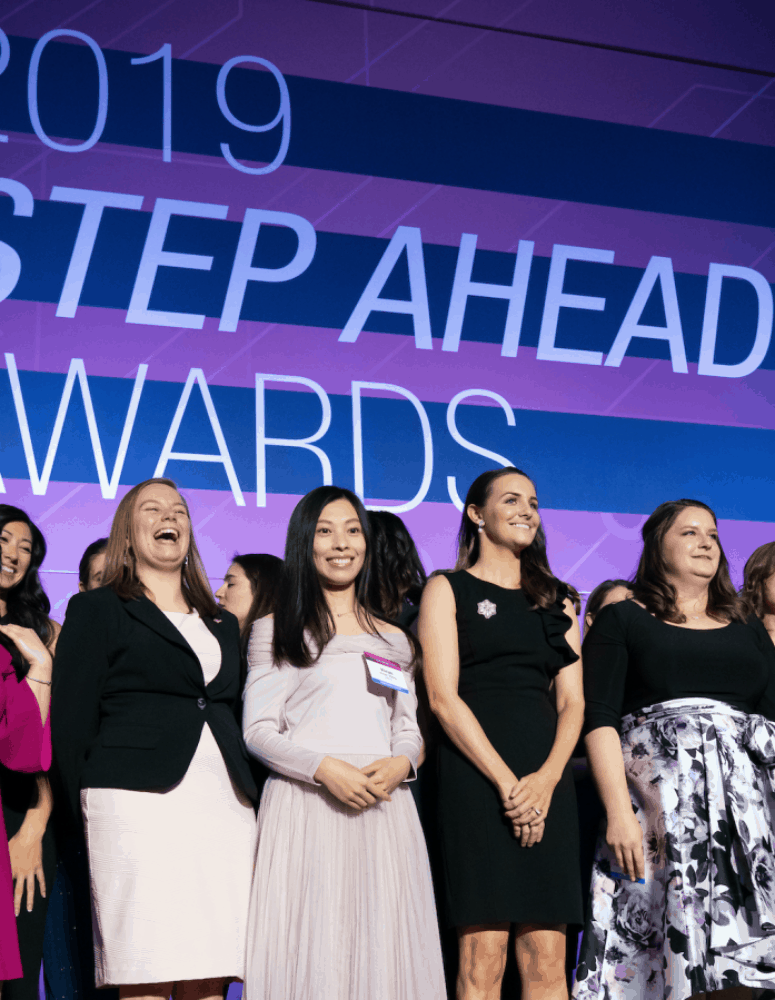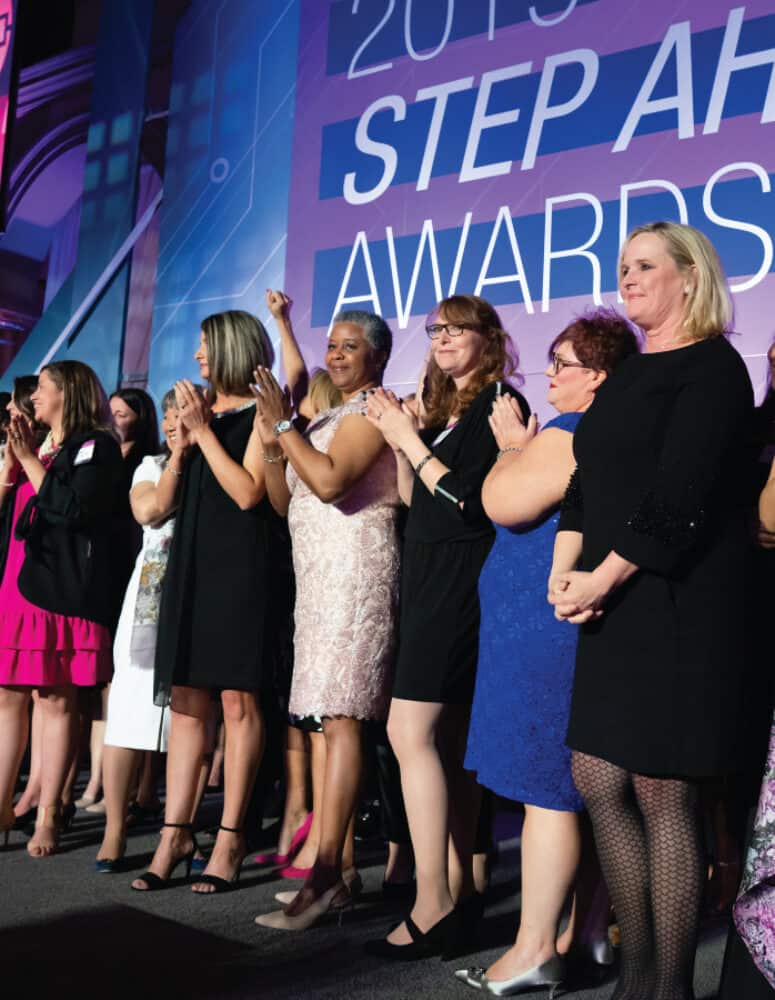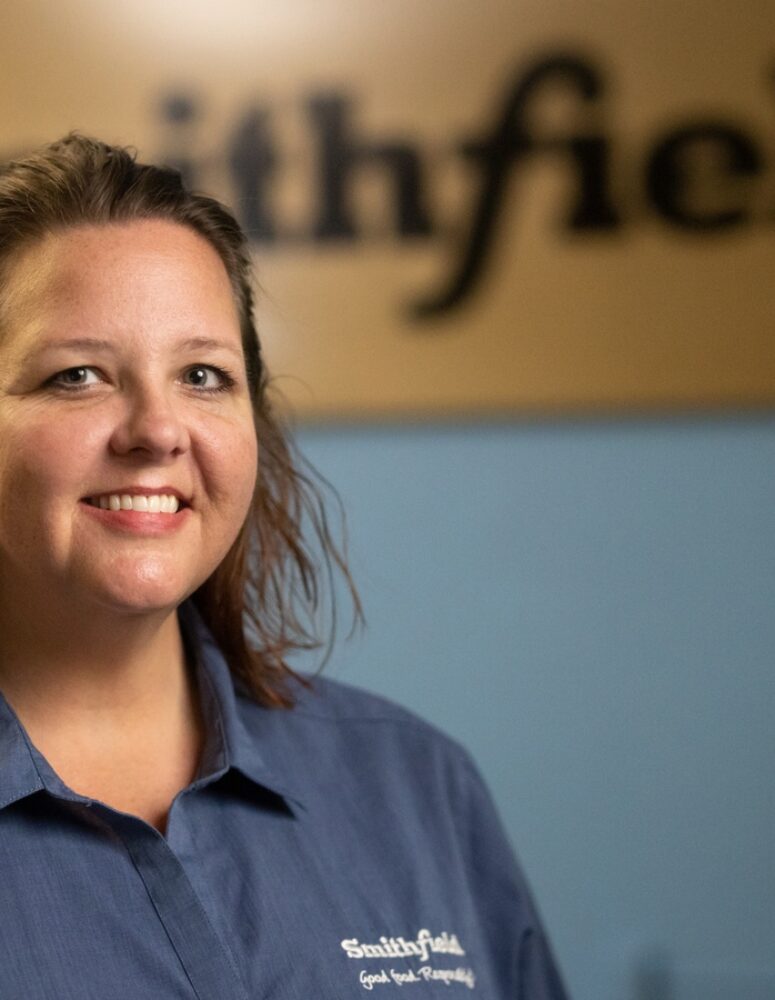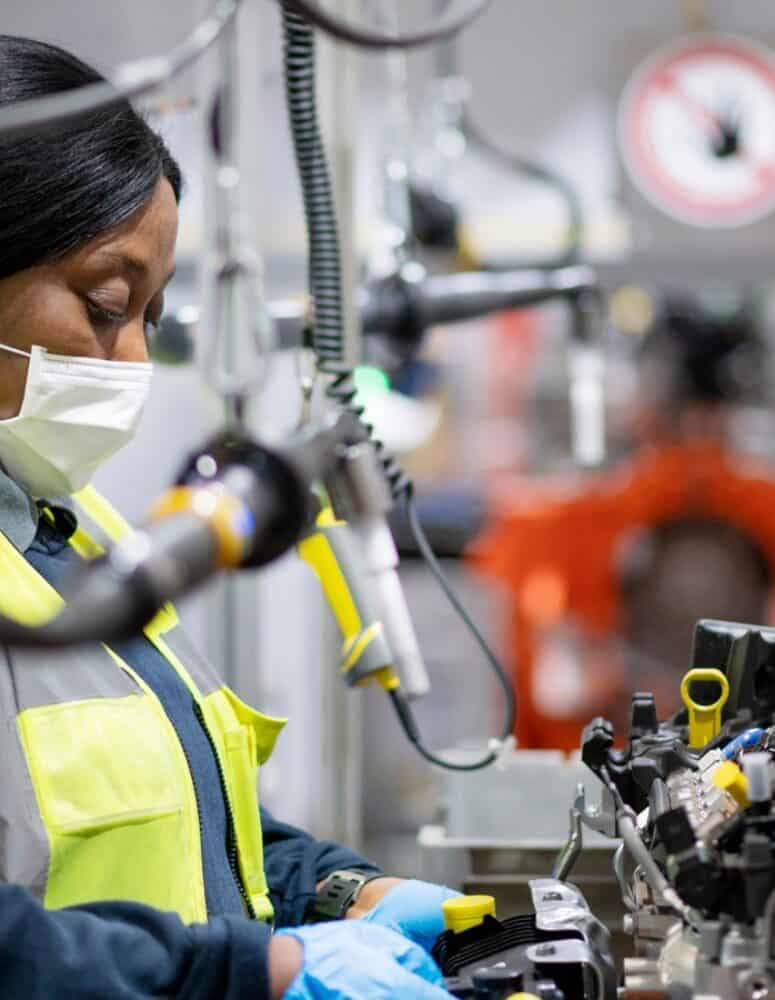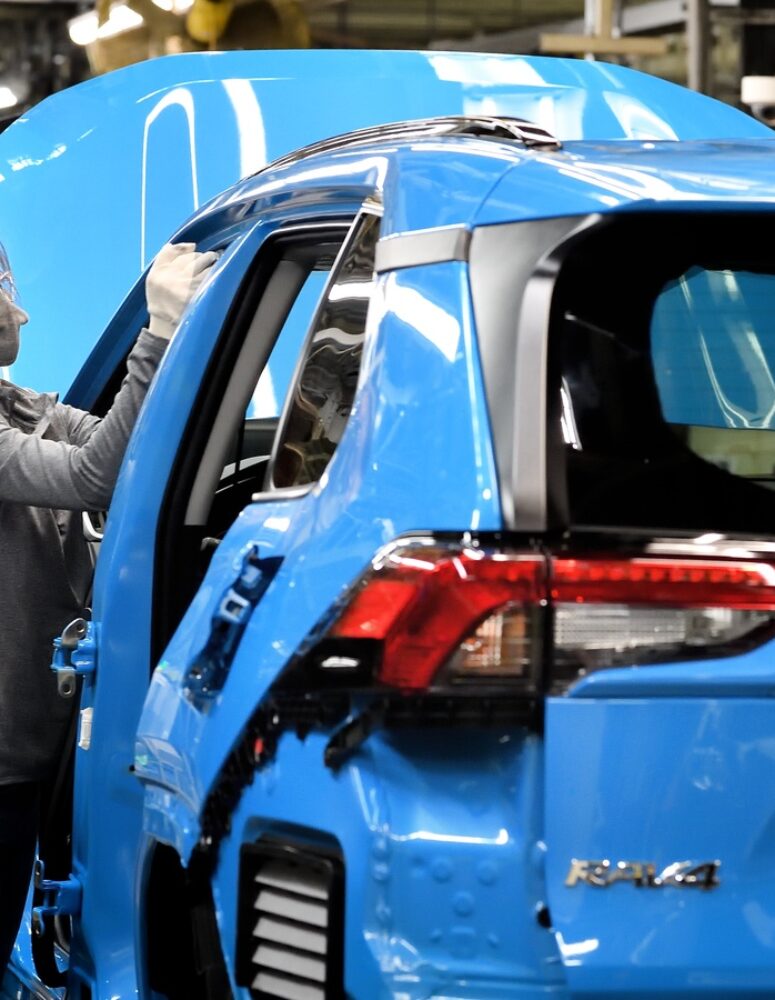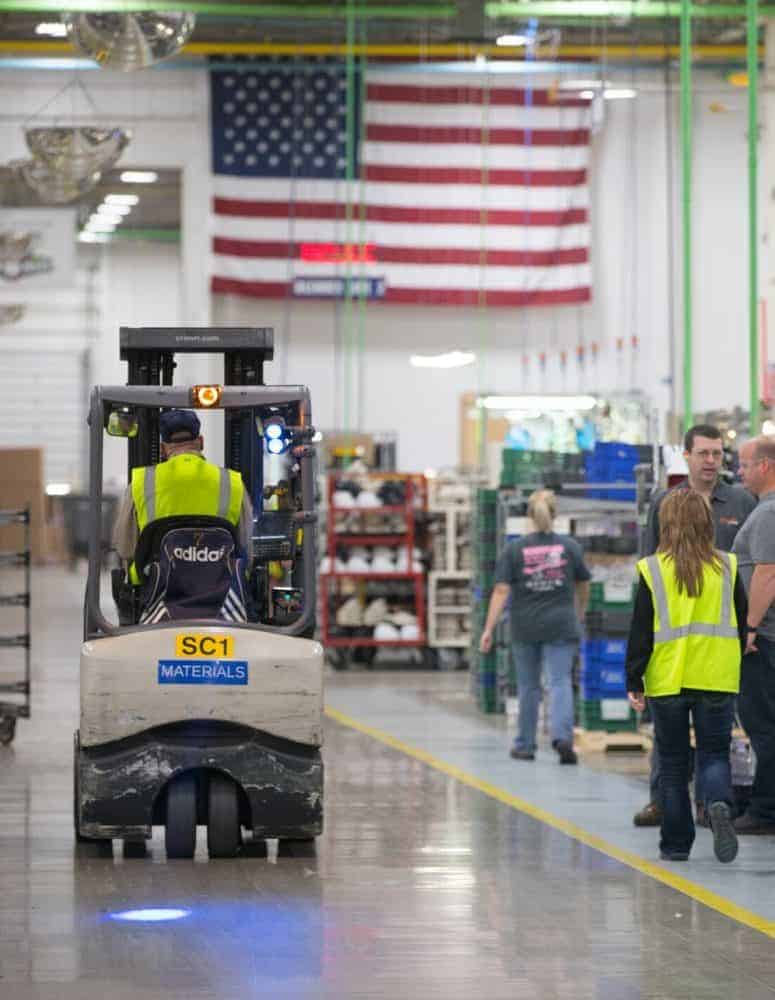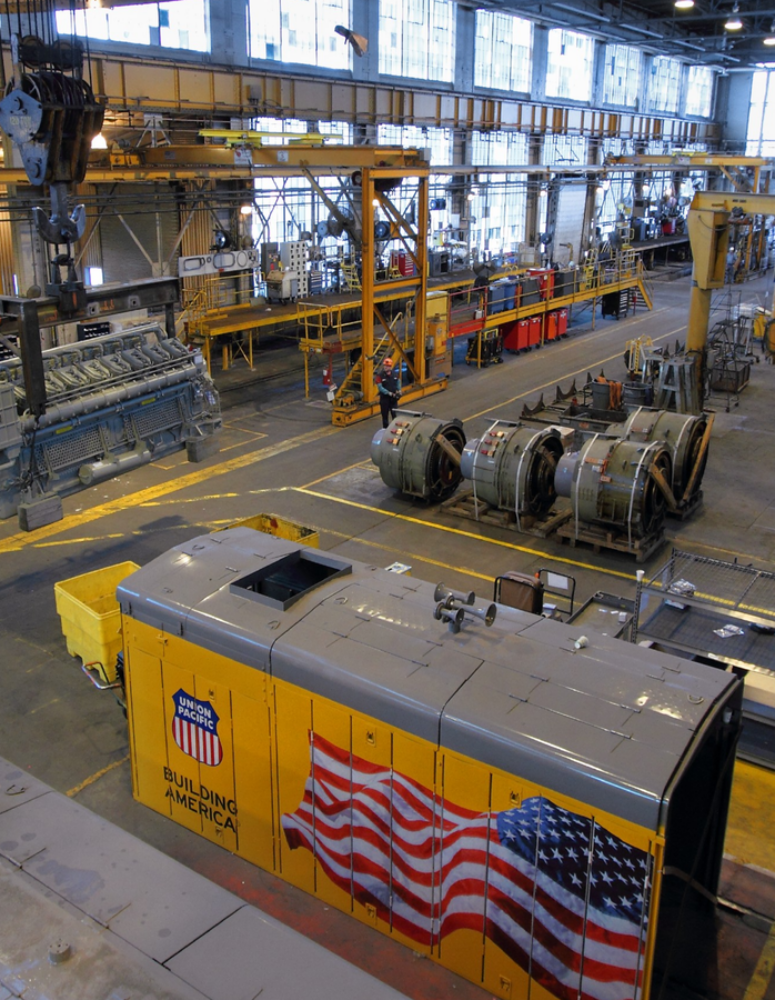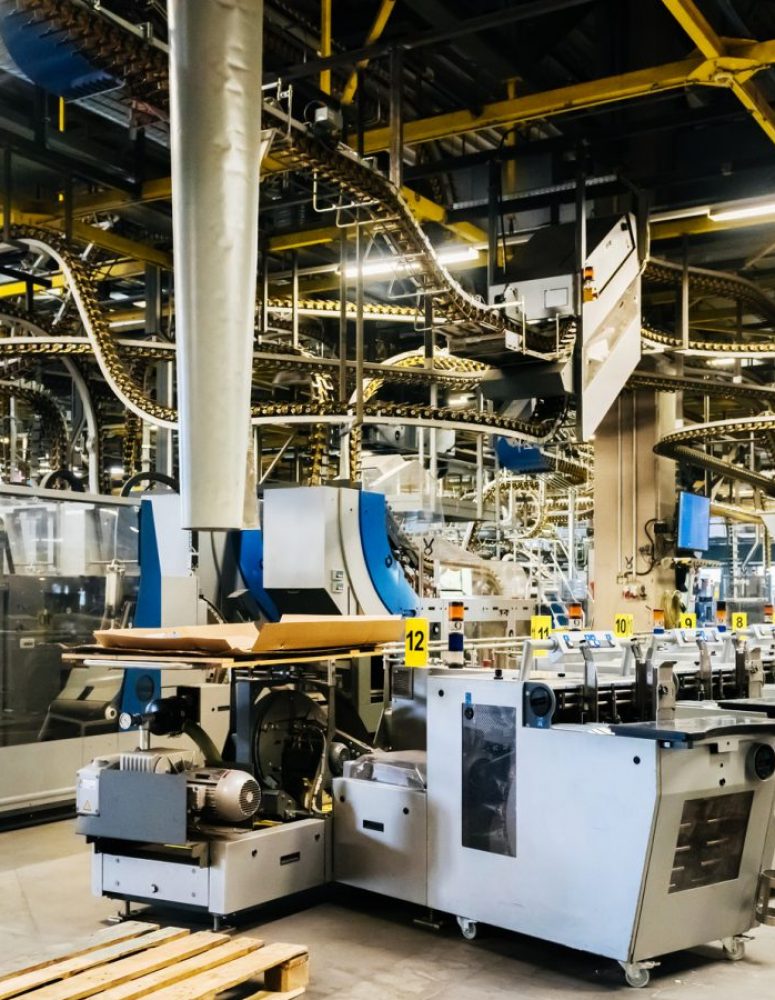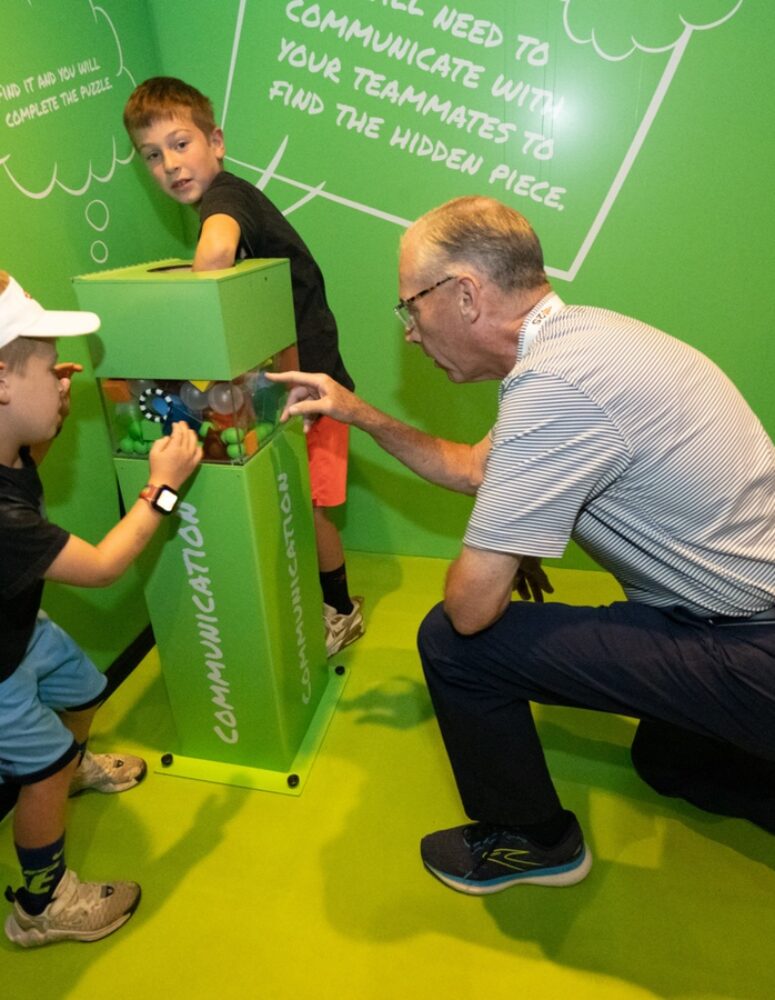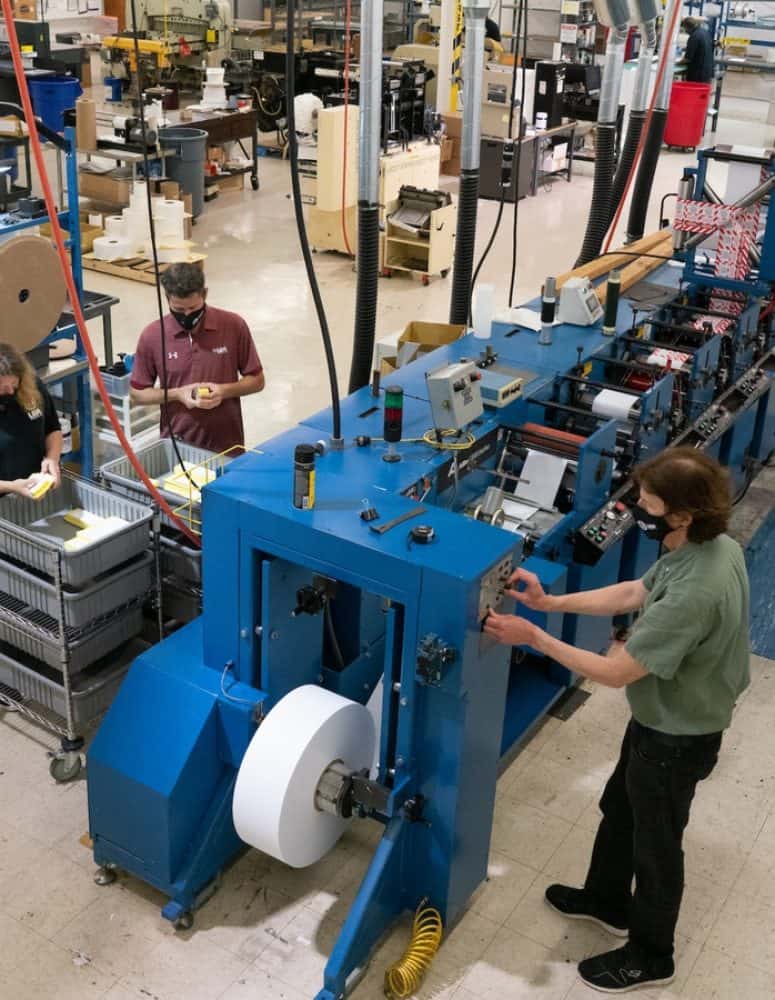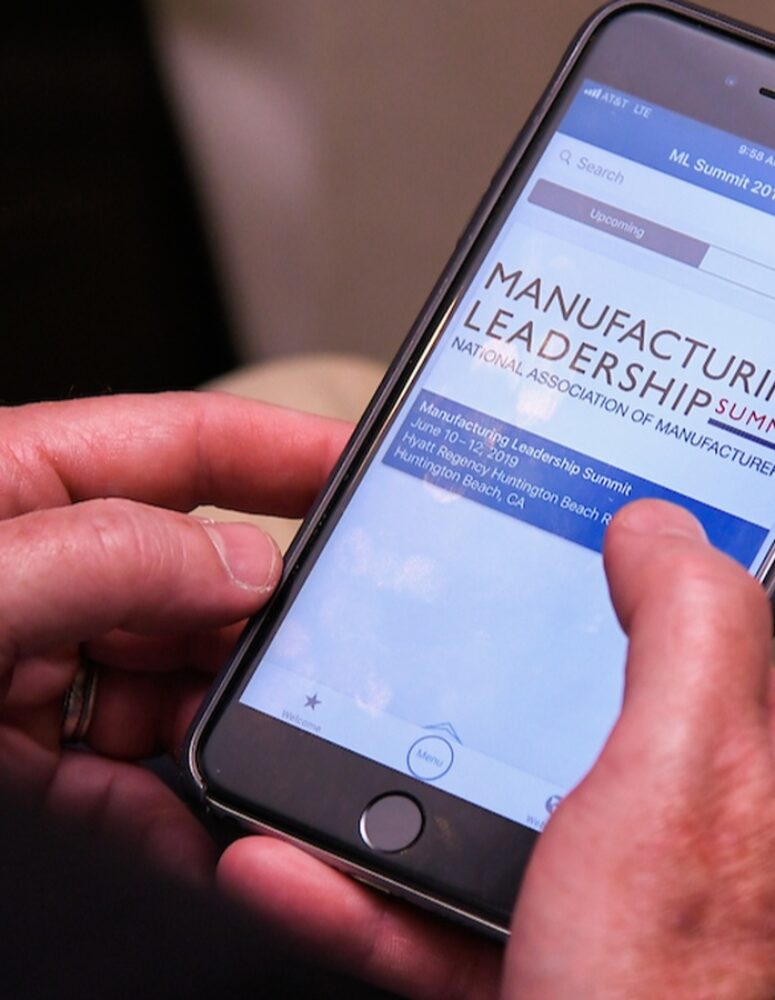A Young Engineer Makes Herself Heard in Manufacturing
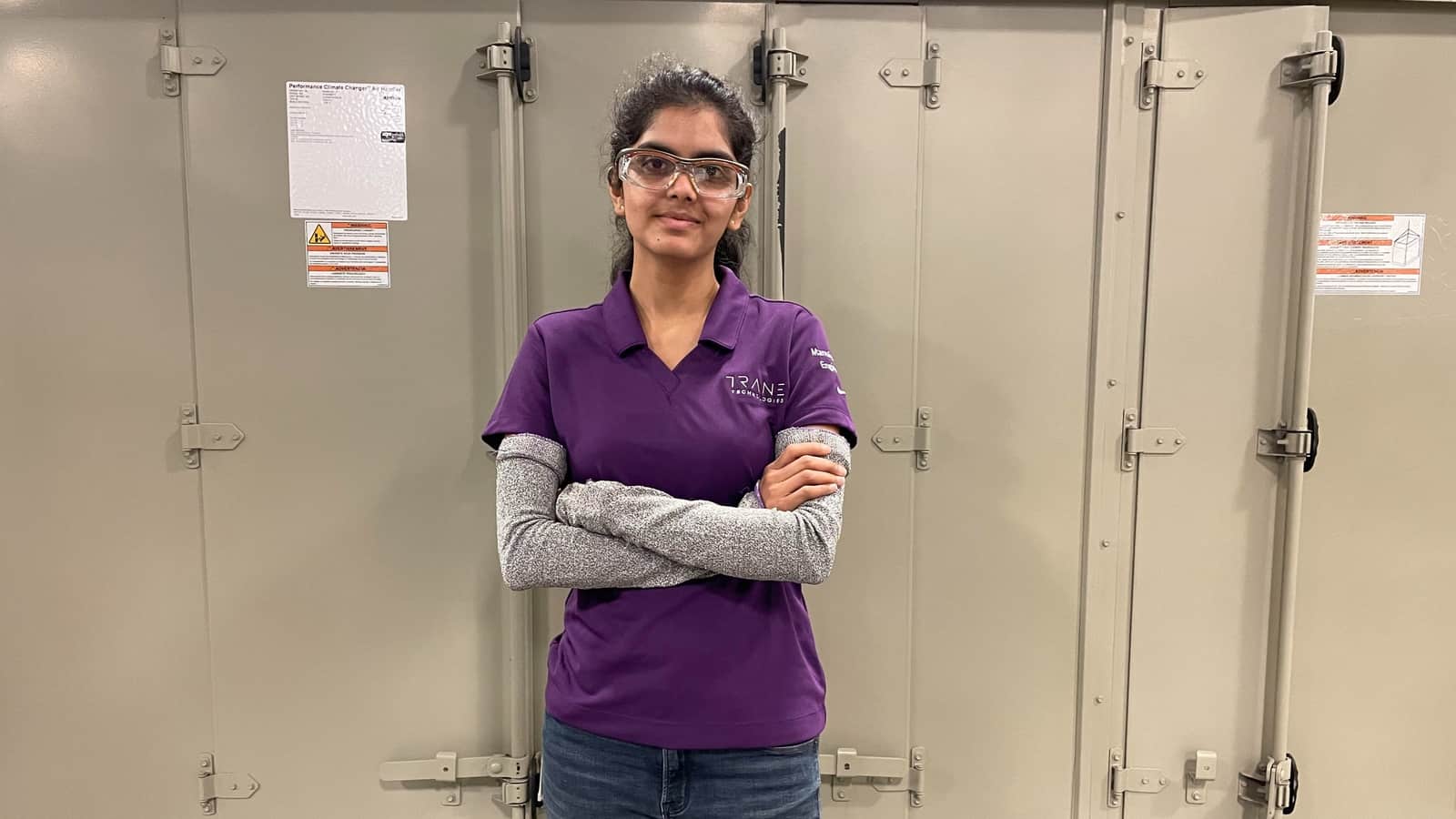
Rashmi Vadlakonda is a woman with a voice, and she’s not afraid to use it.
As a manufacturing engineer at Trane Technologies—a company focused on sustainable climate innovations—Vadlakonda is making advancements in engineering and paving the way for more women of color to join her. That’s why she was recently recognized by the Manufacturing Institute’s 2023 Women MAKE Awards as an Emerging Leader.
The award: The Women MAKE Awards, formerly known as the STEP Ahead Awards, honor top female talent in the industry while providing honorees with a platform to inspire other future industry leaders. Vadlakonda sees the honor as an opportunity to keep speaking up for people who are underrepresented.
- “I believe that for young women in manufacturing, especially for me as an immigrant young woman of color … a title helps,” said Vadlakonda. “This award gives me that title [and] the courage that I need to speak up and say, ‘Hey, I have something to share, and I want you to listen to me. There’s a reason I was recognized.’”
Starting out: Vadlakonda wasn’t immediately drawn to engineering, but when she was growing up in India, it was typical for young people to pursue engineering or medicine.
- Once she “fell into it,” she loved it, and took an especially strong interest in 3D printing while in graduate school at North Carolina State University. Her passion for 3D printing is what brought her to Trane Technologies.
Making the transition: When she first came to the company, she was responsible for operationalizing additive manufacturing throughout the company.
- She spent a few years in a corporate setting, traveling to different offices and introducing advanced manufacturing technologies—but when the pandemic hit and travel was largely suspended, she had plenty of time to think about what she wanted to do next. That’s when she decided to pivot to working in a factory setting.
- “The factory is a basic building block of the manufacturing industry,” said Vadlakonda. “Coming from a research background, I wanted to understand how a factory functions, how the people there think, how different groups interact with each other, and what it takes to actually deliver a good product.”
The factory floor: Vadlakonda is grateful she got a chance to work in both the corporate and factory environments. In a factory, she says, the pace is much faster, and you’re pushed to solve problems right in front of you. This was a challenge she found thrilling.
To women in the industry: When asked what her advice is for women in the industry, Vadlakonda first had advice for industry leaders. She believes they must create a comfortable environment for people from all walks of life.
- “Sure, you can get someone interested in manufacturing, you can help them come into the industry,” said Vadlakonda. “But we also have the responsibility of creating a welcoming environment where they feel like they can grow, so that they don’t leave, so that they’re happy here in the industry.”
The future: Vadlakonda, who is a champion of, and volunteer for, the industry’s Creators Wanted campaign to inspire the next generation of creators, believes it is vital that young people are exposed to manufacturing career options at an early age.
- “It doesn’t start with talking to women who have decided on a career path,” said Vadlakonda. “You have to start with kids. That’s why I like talking at Creators Wanted. Young people are naturally attracted to what they’re attracted to. Our job as adults is to help them see the options.”
The last word: “Manufacturing is very exciting,” said Vadlakonda. “It’s very interesting, you get to be creative and solve problems—and it’s such a satisfying feeling to solve problems.”
More Women Join the Manufacturing Workforce
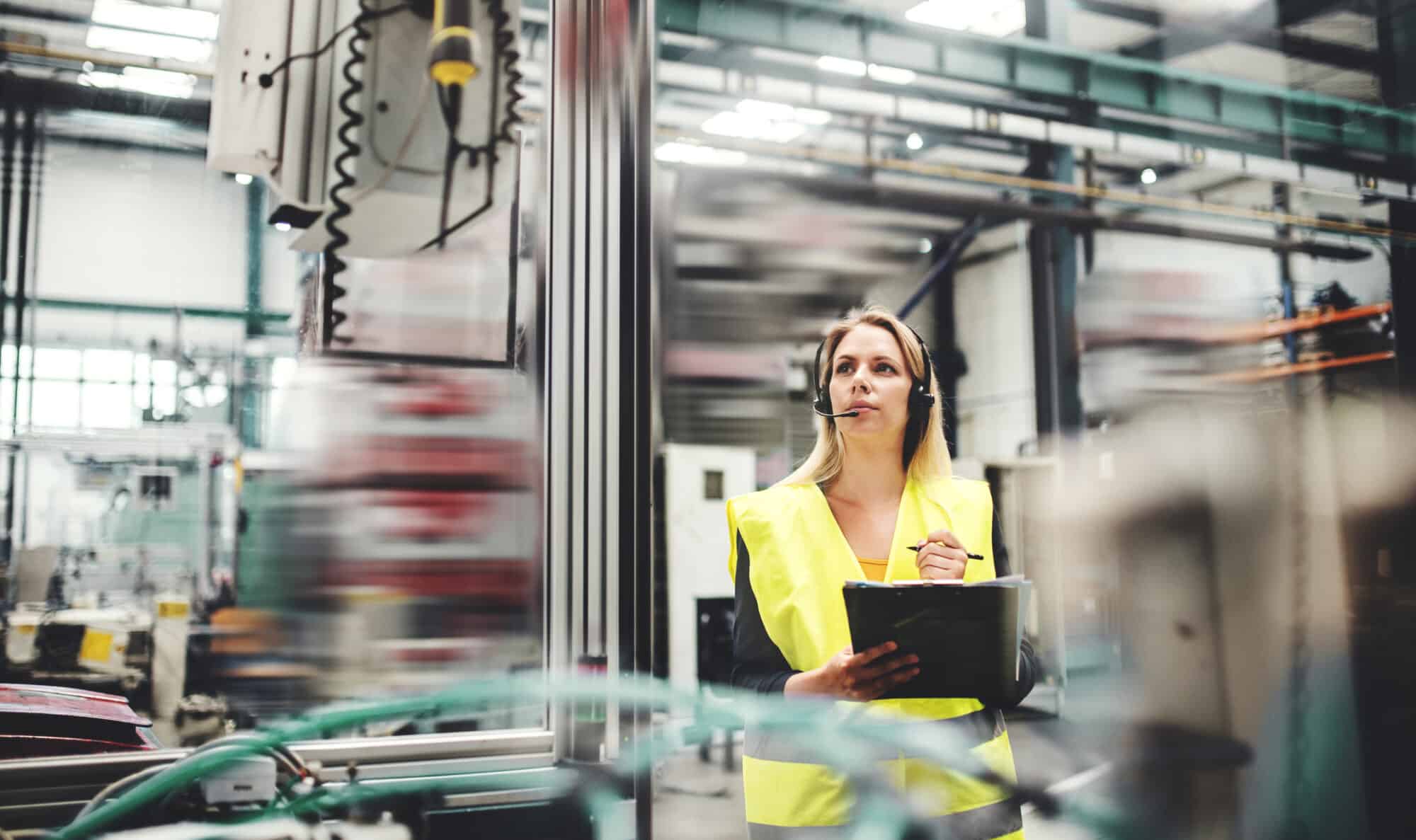
Fresh off International Women’s Day, which was March 8, there’s some encouraging news on the labor front: more women are coming back to the workforce, both in manufacturing and throughout the economy.
In manufacturing: Female employment in the industry reached its height this year, with a total of 3.77 million workers, according to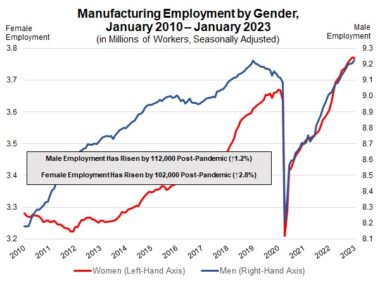 NAM calculations based on BLS numbers.
NAM calculations based on BLS numbers.
- Women now account for 29% of the manufacturing workforce.
- A year ago this week, the Manufacturing Institute, the NAM’s 501(c)3 workforce development and education partner, launched its 35×30 campaign, an initiative that aims to boost women’s share of the manufacturing workforce to 35% by 2030.
The overall economy: “Women have gained more jobs than men for four straight months, including in January’s hiring surge, pushing them to hold more than 49.8% of all nonfarm jobs,” according to The Wall Street Journal (subscription).
- “Female workers last edged higher than men on U.S. payrolls in late 2019, before the pandemic sent nearly 12 million women out of jobs, compared with 10 million men.”
Why it’s happening: The child-care disruptions and health concerns that made many women leave the workforce during the pandemic are diminishing, while employers offer historically high pay and increasing numbers of remote positions.
Why it’s important: More women in the workforce could help ease both worker shortages and inflation.
- With January unemployment reaching a 53-year low, “[a] greater supply of labor could work to counter rising wages and align with the Federal Reserve’s goal of cooling inflation,” according to the Journal.
- More job seekers could also help U.S. manufacturers, whose job openings edged up to 803,0000 in January.
The last word: “In just a year, the 35×30 campaign has made great strides in increasing the number of women in manufacturing—and the latest data show as much,” said MI President Carolyn Lee. “We’re close to our goal. Together, we can get the rest of the way there and make it to 35% by 2030.”
Professional Development Resource: Building Your Personal Brand
On February 16, the Manufacturing Institute held a professional development virtual event on building your personal brand, presented by branding expert Cat O’Shaughnessy Coffrin, Founder and CEO of CaptivatingCo.
View the recording here and the slide deck here.
TOPLINE TAKEAWAYS
Your personal brand consists of:
- Proposition: The value you create
- Persona: Your X factor
- Purpose: What drives you
Steps you can take to start building your personal brand:
- Self-Reflect: What role do you play on your team? What skills do you bring? Look for patterns in your career on how you approach your job and get things done.
- Ask For Feedback: Connect with your colleagues and friends and ask how they would describe the attributes, attitudes and skills you bring to the table. This external perspective is valuable for shaping your narrative.
- Connect and Reconnect: Remember that teacher who had a profound impact on you? Or a former colleague who you lost touch with? Reach out to them and schedule a coffee to catch up and remind yourself how many people are in your corner wanting you to succeed.
- Revisit Your LinkedIn: There are two simple step you can take right now to enhance your online presence; make sure your ‘About’ section is drafted in the first person (LinkedIn is a social platform!) and identify, follow and engage with leaders of topics that interest you.
WATCH: 2023 State of Manufacturing Address
Presented by Jay Timmons, President and CEO of the National Association of Manufacturers, the 2023 State of Manufacturing Address was given from Husco International in Waukesha, Wisconsin. Special remarks were given by Kurt Bauer, President and CEO, Wisconsin Manufacturers & Commerce. Special thanks to Husco President and CEO Austin Ramirez and his team for hosting this year’s address.
Read the official remarks here.
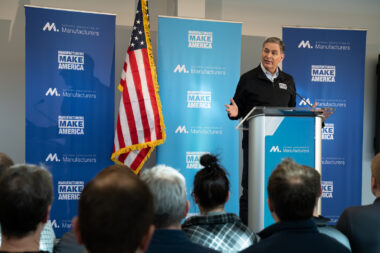
We’re hitting the road. This year’s NAM State of Manufacturing Address officially kicked off the 2023 leg of the NAM’s Competing to Win Tour. The tour will continue to spotlight the industry’s rapid transformation, while also focusing on manufacturing’s well-paying careers, diverse workforce and real-world solutions for the industry’s continued growth.
Upcoming stops: Waukesha and Pewaukee, Wisconsin (Tue, Feb 21); Fishers, Indiana (Wed, Feb 22); Harahan and Avery Island, Louisiana (Thurs, Feb 23)
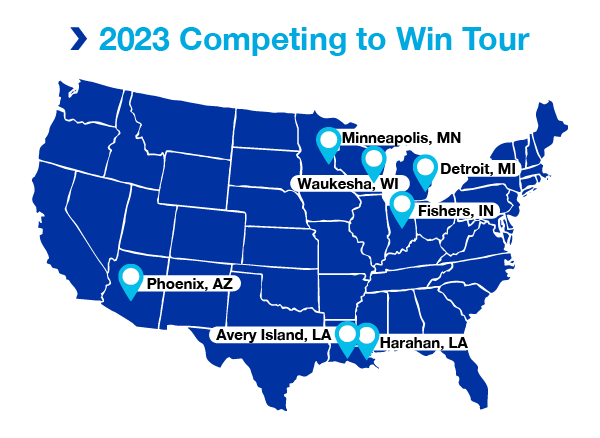
Why Female Mentorship Matters in Manufacturing

A great mentor can make all the difference to your career—especially if you’re in an industry where you may find yourself in the minority. To help women in manufacturing reach their full potential in a male-dominated industry, the Manufacturing Institute’s Women MAKE America program has created a mentorship program, generously supported by its 35×30 Campaign supporters, Dow, General Motors, Arconic Foundation, Alcoa Foundation and Ketchie.
- The program has an ambitious goal: to train more than 1,000 female mentors by 2030 and connect them with younger women in the industry as well as students in colleges, high schools and middle schools.
One year into the program, the participants are already seeing an impact. In a recent Women MAKE webinar, attendees got to hear from one successful and happy mentee, while also receiving guidance on building their own slate of mentors.
Making a difference: “I was especially thankful for the Women MAKE Mentorship Program because it filled a gap in my support system and allowed me to have a mentor who was really dedicated to my professional development,” said Zen Saunders, a 2022 Women MAKE mentee and diversity, equity, inclusion and employee experience leader at Dow.
- Saunders explained that her mentor shared examples of how she built her career, which inspired Saunders to map out her own next steps more creatively. Through regular meetings with her mentor, Saunders learned to find common interests with colleagues and earn their buy-in on new projects.
- “[My mentor has] been an active listener and committed to my success, creating a safe space for me to learn from the challenges that I’ve faced while offering a refreshing perspective that’s uplifting and encouraging,” said Saunders.
Support from Women MAKE: After hearing from Saunders, participants in the webinar were asked to design a personal “board of directors” to mentor them in their own careers. Women MAKE hosts many such activities, which are designed to forge connections between participants and encourage them to think ambitiously about their career paths.
- The board members could be people from participants’ personal or professional lives, instructed MI Director of Women’s Engagement Sarah Shields. An ideal board of directors should include a sponsor, an innovator, an expert, a truth teller and a safe space.
- After they brainstormed a list of people who could fit these roles, Shields encouraged participants to ask these people to act as mentors and to schedule regular times to discuss their career plans.
The last word: “I’m thankful to the Manufacturing Institute for this opportunity and the amazing Women MAKE Mentorship Program. It’s really been a life-changing and transformative experience for me. I highly recommend this program for women and girls currently in or interested in the industry,” Saunders said.
Get involved: In addition to young and senior manufacturing professionals, this year Women MAKE is inviting young women and girls ages 13+ who are interested in STEM, as well as refugees seeking opportunities in the U.S., to join the Women MAKE Mentorship Program.
- If you are interested in joining the Women MAKE Mentorship Program as a mentor, or know of someone who would benefit from becoming a mentee, check out the application. The deadline for applying is Tuesday, Feb. 28.
- You can also tune in to the next Women Connect webinar on “Building Your Personal Brand” on Thursday, Feb. 16.
- And last, if you have questions, please contact the Women MAKE team at [email protected].
Creators Connect Launched
As part of the Creators Wanted campaign, the NAM and the Manufacturing Institute have partnered with FactoryFix, a leading one-stop solution for manufacturing recruitment, to launch Creators Connect.
The digital career-resources platform aims to address the skills gap and misconceptions about the manufacturing industry, providing manufacturers with a powerful new tool to help build their workforce.
What it is: The platform, which is housed on Creatorswanted.org and powered by FactoryFix, is free to use. It is the first and only unified platform where users can search and explore job openings, career pathways and job training programs across the entire manufacturing sector.
- With more than 400,000 listed job openings, Creators Connect builds on the success of its parent initiative, Creators Wanted.
- It is also working to boost the number of students enrolling in technical and vocational schools or reskilling programs by 25% and to increase the positive perception of the manufacturing industry among parents and career influencers.
Learn more about how to get the most out of Creators Connect by visiting the FAQ page here or reading an article on the launch here. Questions? Contact the Creators Wanted team here.
What to Know about Hiring Military Talent
With 200,000 people transitioning out of the military annually in addition to veterans, reservists and military spouses, the military population represents a highly skilled workforce. At a recent roundtable, panelists from Smithfield Foods, Dow and National Gypsum discussed how the manufacturing industry can leverage this population’s strengths.
Key Insights
- Manufacturers should identify a leader with military background in their organization to support the hiring process, particularly in parsing military and manufacturing lingo in job descriptions and resumes.
- Manufacturers should communicate if they will accept military experience as an equivalency to an associate’s or bachelor’s degree in their job descriptions.
- Networking can be the determining factor in getting an interview and landing a job offer. The MI will be hosting a virtual hiring fair in late February. Keep an eye on our website for more updates!
- Employee resource groups can be an excellent resource for newly hired military talent and can advocate for population-specific needs.
Read the full article here.
How Manufacturers Should Pursue Second Chance Hiring
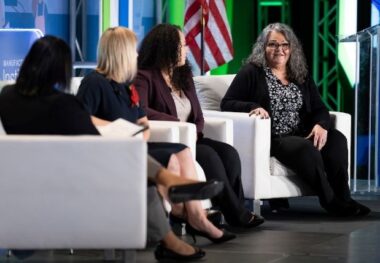 With one-in-four Americans possessing a prior conviction, manufacturers can access a diverse and motivated talent pool by pursuing second chance hiring.
With one-in-four Americans possessing a prior conviction, manufacturers can access a diverse and motivated talent pool by pursuing second chance hiring.
At the Manufacturing Institute’s inaugural Workforce Summit held back in October, panelists from the MI, Saint-Gobain, JBM Packaging and Envoy shared tips on how to create such hiring programs and the benefits they’ve seen so far.
Key Insights
- Data shows that second chance individuals are retained longer, have higher productivity and engage in more training than the average individual.
- Start with a pilot program, then scale it up. It’s important to select a site that has the right culture, plant manager and HR support.
- Build a framework that allows the company to fairly evaluate an individual’s background.
- Offer support systems and partner with community organizations to meet the unique needs of this population.
Read the full article here.
How Manufacturers Should Pursue Second Chance Hiring
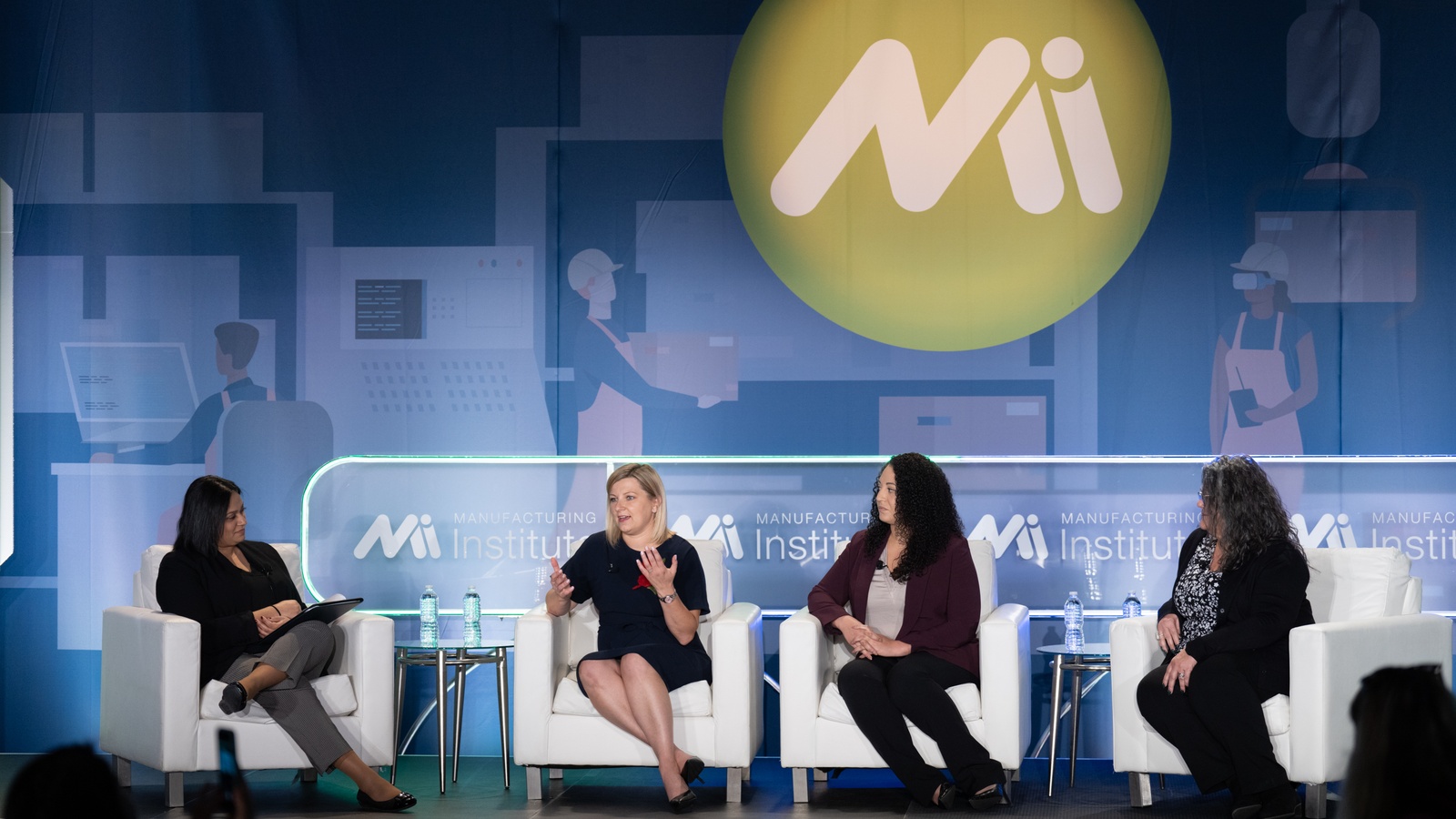
With one-in-four Americans possessing a criminal record, manufacturers who pursue “second chance hiring” are accessing a diverse and motivated talent pool. What do they need to know to begin?
At the Manufacturing Institute’s inaugural Workforce Summit, held in Cincinnati, Ohio, last October, panelists from manufacturers Saint-Gobain and JBM Packaging and from Envoy, a social impact advisory firm specializing in fair chance employment, shared tips on how to create such hiring programs.
Risk assessment: While safety is a concern, panelists emphasized that there is a difference between perceived risk and actual risk.
- “The data shows that second chance individuals are retained longer, have higher productivity and engage in more training than the average individual that you bring in,” said Cassi Zumbiel, managing director at Envoy.
- Saint-Gobain uses “a framework for background checks which we have developed in collaboration with our legal team. Candidates in the second chance hiring programs demonstrate higher level of commitment and a proactive approach to job searching, setting themselves up for success in future roles. We like to collaborate with our community partners in order to provide a good candidate experience and a seamless recruiting process,” explained Magda Dexter, senior vice president of communications and human resources at Saint-Gobain.
- For JBM Packaging, it’s about having honest and transparent conversations with candidates about their backgrounds. JBM also works with case managers to get referrals and assess candidates’ fit with the company.
How to get started: Dexter recommended that companies start with a pilot program, then scale it up, noting that it’s important to select a site that has the right culture, an engaged plant manager and HR support.
- Saint-Gobain has also tried out a variety of different support systems across their company, including hiring a part-time social worker as well as instituting a buddy system and a mentoring program.
- Zumbiel encouraged companies to do background checks only after a conditional offer has been made, recommending that companies should limit the look-back period to three to seven years. “That helps eliminate some of that bias and makes you really look at the candidate holistically.”
- Panelists also noted that it was important to review job descriptions to make sure they specify that second chance candidates are welcome.
From jobs to careers: Ninety percent of JBM’s second chance hires are entry-level production workers; the other 10% have mechanical or machinist skills and fill entry-level technical roles. However, Valerie Plis, director of human capital and culture at JBM, realized there was a lot of experience that the company wasn’t tapping into.
- Plis shared a story of a second chance hire who started as a machine operator. As Plis got to know her, she realized that the new hire had a background in training. The new hire progressed from an operator trainer to a lead trainer, then joined the HR team. In addition to leading training across the company, she now helms the second chance recruiting initiative, coming back full circle.
- Plis added, “At JBM, we started working on putting together some very defined career paths. It’s changed the way we conduct our performance reviews, so now we’re focused on growth and development.”
Succeed by partnering: While second chance hires come with a lot of benefits, there are also some challenges that are unique to this population. Partnering with community organizations can help, the panelists said.
- For Dexter, it’s about figuring out what the company will offer and what the community partners will offer. “We will support with on-the-job training. We will support with [providing] structure at work. We will rely on [our community partners] for job readiness and life skills training.”
- Zumbiel noted that “the community partner can advocate for the employer about the great opportunities and the benefits of working in manufacturing” and also prepare candidates to ace their interviews.
The last word: “A lot of the things we implemented, we thought we were doing just for our second chance population, but they actually ended up becoming a huge benefit for our entire workforce,” Plis said.
How Will AI Impact the Manufacturing Workforce?

AI is changing the way manufacturers do business—from the production line to the back office and across the supply chain. At the Manufacturing Leadership Council’s Manufacturing in 2030 Project: Let’s Talk about AI event last month in Nashville, Tennessee, panelists discussed how those sweeping changes would alter, and enhance, the manufacturing workforce.
A collaboration between the MLC (the NAM’s digital transformation arm) and the MI (the NAM’s 501(c)3 workforce development and education partner), the event provided key insights for manufacturers into how technology and workforce trends interact with each other. Here are a few key takeaways.
Net positive: “The history of technology adoption is about improving the job quality of individuals on the shop floor. AI helps them to do the job better, provide them with better tools, gives them greater authority and ultimately increases the value-add of their jobs. All of that is a net positive for those individuals,” said MI Vice President of Workforce Solutions Gardner Carrick.
- By leveraging data and enabling greater efficiency, AI will improve communication, increase collaboration across disciplines and stimulate innovation, according to the panel.
- In addition, “AI can even inform the workforce’s creativity by working with it to design a new product or system,” said Jacey Heuer, lead, data science and advanced analytics, Pella Corporation.
Skills needed: While you might expect that implementing AI requires workers skilled in programming, data science and machine learning, manufacturers will also need to expand their bench of critical thinkers and problem-solvers. The panelists had a few tips to help companies along.
- Invest in upskilling programs to make the AI integration process at your company smoother and develop the talent you already have.
- Update job descriptions to reflect the skill sets the company will need in the next five to seven years.
- Consider recruiting for and teaching adaptive skills—skills that enable individuals to adapt easily to changing demands and environments—which can increase the flexibility of your workforce.
- Build partnerships with local schools, community colleges and technical and vocational schools to develop talent pipelines that will meet your needs.
The human-AI collaboration: While AI will take over monotonous, repetitive tasks, the panelists predicted that the industry will continue to center around human labor.
- “You can teach AI to do X. You can teach AI to do Y. [However,] combining the two may be really difficult for AI, while a human can do it better. You’re going to continue to see humans in roles that center on making decisions and telling stories,” said Asi Klein, managing director, industrial products and organization transformation, Deloitte Consulting.
- Meanwhile, AI adoption will likely lead to an increase in available jobs, as more skilled workers will be needed to guide and inform these new processes.
The last word: “Over the last 12 years, we’ve seen a lot of technology adoption, but we have not seen a lot of job loss. In fact, we’ve seen job gains,” said Carrick. “There is a lot of opportunity to reimagine jobs to add value that AI will help to illuminate.”
